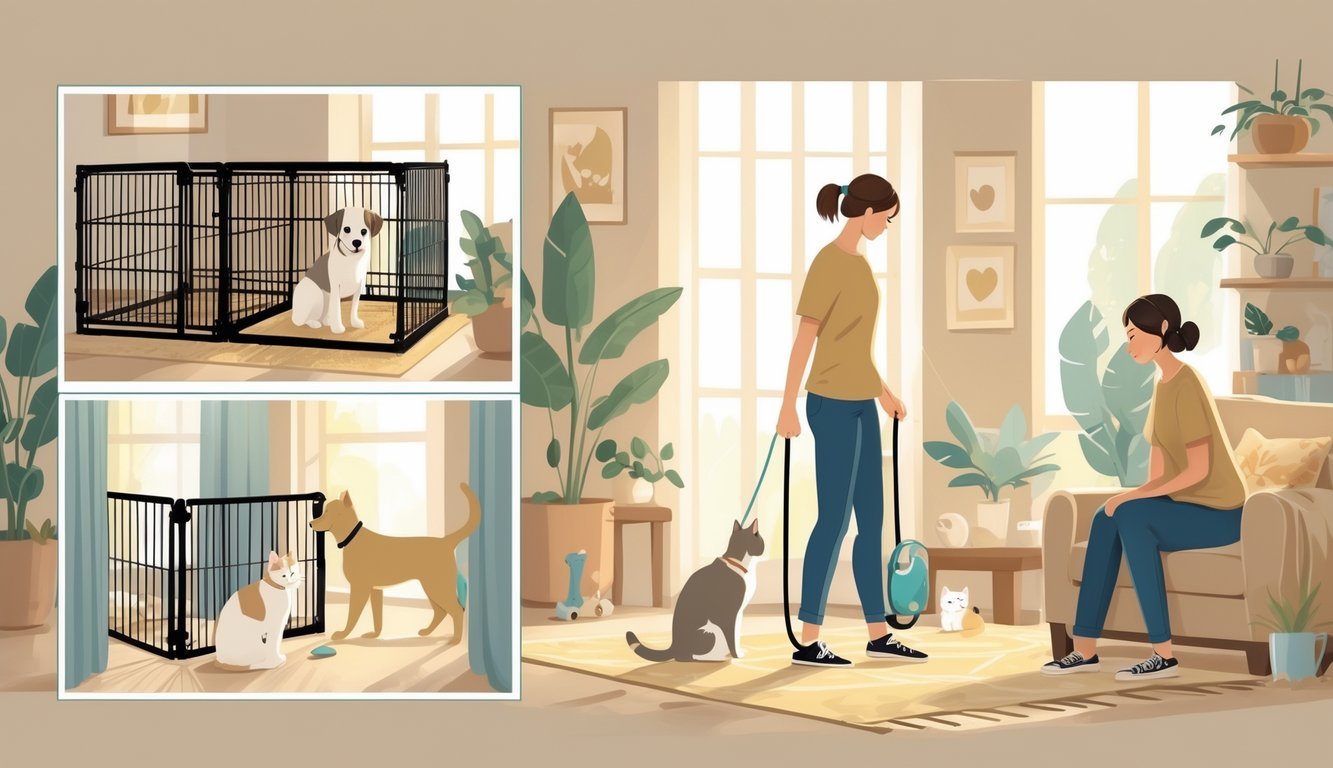PsychNewsDaily Publishers
100 Summit Drive
Burlington, MA, 01803
Telephone: (320) 349-2484
PsychNewsDaily Publishers
100 Summit Drive
Burlington, MA, 01803
Telephone: (320) 349-2484
Bringing a new dog or cat home requires gradual introductions, separate safe spaces, scent exchanges, and monitoring behavior to ensure comfort and reduce stress for both pets.

Bringing a new dog or cat home is exciting, but honestly, it can get a little stressful too. To help both pets feel safe and at ease, set up separate spaces and keep them apart at first.
Let them get used to each other’s scent and presence before you even think about letting them meet. That first step really helps cut down on anxiety for both animals.
Give your cat high spots or a safe room where your dog can’t go. Cats love control, and this way, they can watch from a distance without feeling trapped.
Try swapping their bedding or toys before they meet. It sounds simple, but it helps each pet get familiar with the other’s scent.
Take things slow and guide their first meetings. Watch how they react and let them adjust in their own time.

Before you let your new dog and cat meet, get your home ready so everyone feels safe. That means making separate spots for each pet, helping them learn each other’s scent, and gathering the right supplies.
Create a spot where each pet can relax alone. For your cat, pick a quiet room with a litter box, food, and water.
Make sure your dog can’t get in there. For your dog, set up a crate or comfy bed.
This gives your dog a place to chill out and feel secure. Baby gates work well to keep pets apart when you need to.
Safe zones help keep both animals calm while they adjust.
Swap scents before any face-to-face meetings. Rub a cloth on your dog and leave it in the cat’s space.
Do the same with your cat’s scent for the dog. Repeat this for a few days.
You can also swap their bedding or toys. It’s a small thing, but it helps make new smells feel normal.
Get separate food and water bowls for each pet. Keep the cat’s litter box in a spot the dog can’t reach.
Remove small items or cords that pets might chew. Stash cleaning supplies and foods out of reach.
Grab leashes, collars, and treats for training and rewarding good behavior. Pet-proofing your home keeps both your new dog and cat safe as they get used to each other.

When you bring a new dog home, take it slow. You want both your dog and cat to feel comfortable.
This usually means controlled meetings, keeping a close eye on their behavior, and knowing when to get help.
Keep your dog and cat apart for at least three or four days. This gives your new dog time to settle in and lets your cat feel safe.
Set up a barrier like a baby gate so they can see and sniff each other without touching. Let your cat check out the dog’s scent by swapping bedding or toys.
When you’re ready for their first real meeting, keep your dog on a leash. Let your cat decide if it wants to approach or hang back.
Don’t force it—just let things happen naturally.
After those first meetings, allow short, supervised interactions. Keep your dog leashed to prevent sudden moves.
Give both pets breaks and make sure they have their own safe spaces. Try calm activities like treats or gentle petting to make the experience positive.
If both pets stay calm, slowly increase their time together. If either one gets stressed or snappy, separate them and try again later.
Watch for signs that either pet feels nervous. Your cat might hiss, flatten its ears, or hide.
Your dog might stare, growl, or get too excited. If you spot any of these, stop the intro and give them space.
Don’t push them—it just makes things worse. Keep track of their reactions so you know who needs more time and what sets them off.
If you notice illness, behavior issues, or either pet seems extremely afraid, talk to your vet. They can check for health problems that might affect behavior.
Sometimes vets suggest calming aids or training tips that fit your pets’ needs. Getting professional advice can really help.
Always make sure your new dog gets a health check before you start introductions. That keeps your cat safe, too.

Start with calm, slow meetings so both pets feel safe. Keep dogs on a leash and let cats move around freely.
Set up separate spaces for food, litter, and rest for each pet.
Exercise your dog and feed it before introducing them. Let the cat approach the dog when it feels ready.
Don’t force anything.
Keep your dog on a leash during first meetings. Don’t let your dog chase or corner the cat.
Give your cat safe places where the dog can’t go.
Look for relaxed body language. If your dog stays calm and your cat seems curious instead of scared, that’s a good sign.
Watch for tolerance or gentle play.
Try to introduce a kitten under six months old. Young animals usually adapt more easily and are more social.
Supervise every interaction. Give the cat high spots or dog-free rooms.
Teach your dog to be gentle and calm around the cat.
Some cats and dogs adjust in just a few days, while others might need weeks. It really depends on their personalities.
If you stay patient and introduce them calmly and consistently, you’ll usually see better results. Don’t rush their first meetings—let them take it at their own pace.